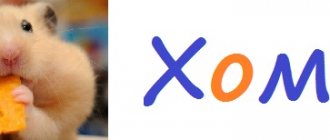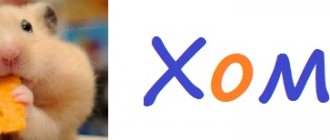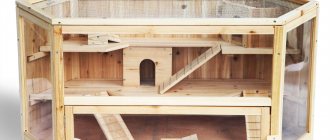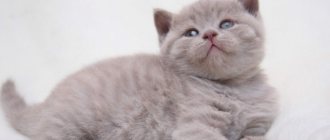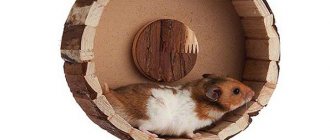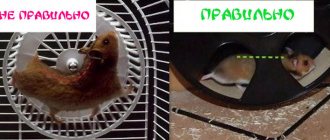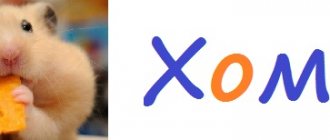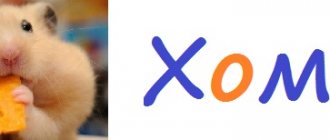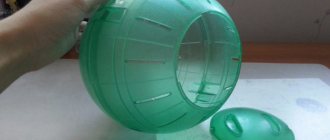An important condition for a long and happy life for a hamster is a properly equipped cage with high-quality bedding. To make a good bedding for a rodent, you need to choose the right litter for hamsters and cover the bottom of the cage with it, it can be sawdust, toilet paper, or small granules. Good bedding for a hamster's cage is no less important than quality food.
How to tame a hamster at night?
since there are two hamsters - there is probably a house in the cage - add a door there and lock them at night.. or buy earplugs. Feed them food. Hamsters will get fat and turn into furry balls with paws.
Feed them food. Hamsters will get fat and turn into furry balls with paws.
Interesting materials:
What prefix is in the word moved? What is the prefix behind the word? What is the prefix in the word harvest? What is the prefix in the word drive in? What associations do you have when you hear the word ecology? What associations do the words kindness evoke in you? What unstressed vowels are at the root of the word? What are the words for greeting? What words are there with an unpronounceable consonant sound? What are the significant parts of a word in Russian?
Which filler to choose - a brief overview
Hay
Hay
A good filler for a cage is hay. You can buy it in a store or prepare it yourself by picking it in the field. No one guarantees environmental purity, but hay is closest to natural habitat conditions. The hamster will make a cozy nest out of it and feast on it according to his mood.
In pet stores you can find several bedding options that differ in price and other parameters. Filler for Djungarians and Syrians must meet the following criteria :
• be safe; • absorb unpleasant odors and absorb moisture; • the structure of the material should be light so that it is easy for the hamster to dig into it.
Sawdust
Sawdust
Sawdust is a universal filler for the Djungarian hamster. By the way, dwarfs are more picky in choosing bedding, perhaps this is due to their tiny size. Sawdust for hamsters is a noticeable leader in sales.
Advantages
• safe for health; • small and large types of sawdust are available for sale; • Djungarians love to dig and burrow, so this is an ideal option for them; • availability and low price are decisive factors in favor of the presented filler.
It's up to you to decide which sawdust is best for your dzhungarik. Many people like granular ones - they are convenient to clean, some are small, some are large.
Flaws
• they are light in weight, so babies throw them outside the cage; • if we talk about the properties of absorbing unpleasant odors, sawdust is not a standard option.
To find out how much sawdust for hamsters costs, just go on an excursion to the nearest pet store. The price will pleasantly surprise you.
Wood filler
Wood granular filler
Another good and inexpensive bedding option is wood filler. It is called pressed sawdust.
Granular litter made from grass and wood is perfect for a hamster's litter box. The downside is that it is not as easy to clean up as clumpy litter, since it is difficult to distinguish between dirty granules and clean ones. The advantages more than cover this disadvantage: herbal and wood fillers are environmentally friendly and absorb odors well.
The habit of snacking on lunch with wood filler is unsafe; the baby can damage the cheek pouches, and if he swallows synthetic granules, he can be poisoned.
It’s easy to wean your baby off a bad habit - choose a different filler. Many hamsters like chinchilla sand.
Advantages : absorbs odors better, but costs more.
Disadvantages : there is wood dust, which negatively affects rodents. In addition, the granules are quite large; it is inconvenient for the tiny dwarf to live on such bedding.
If the baby is allergic to wood dust, such bedding for a Djungarian hamster will not be suitable; in this case, cellulose bedding is better.
The correct choice of filler is no less important than the correct choice of cage. If you have not yet purchased a cage, we strongly recommend reading the article on choosing a cage for dwarf hamsters or a cage for Syrian hamsters.
Cellulose filler
Cellulose filler
Cellulose filler is an ideal option for allergic rodents. The structure is something between the fillers described above. This bedding weakly absorbs odor and moisture, but is absolutely safe for the baby. The granules are small in size, which is very important for dwarf breeds.
Video: how to make cellulose litter for a hamster with your own hands
Lumpy clay litter
Clay Litter
Easy to use clumpy clay litter. Many hamster breeders refuse it because they claim that the composition contains quartz dust that is harmful to the hamster; they prefer fillers made from wheat or corn cobs.
Corn filler
Corn filler
If corn filler had participated in the rating, it could have been given 1st place without a twinge of conscience. It is ideal for hamsters, even better than shavings. The obvious disadvantage is the high cost. But you can change it less often - corn filler holds unpleasant odors well. Even if you pour a thin layer, you will not hear any unpleasant odors, and the hamster will be able to move comfortably. The products do not contain wood dust, therefore they are absolutely safe for rodent health.
If you have not yet decided what kind of bedding to use for hamsters so that they can dig and rummage in it with pleasure, try corn. It can be placed on rodents of different breeds: both Syrian and Djungarian hamsters will appreciate your efforts.
Cat litter
Choosing the right litter for a hamster is a responsible task. A good option is unscented cat litter, but only if it is natural, without fragrances or dyes. You can use wood, but not silicate , which contains substances that corrode the delicate skin on the paws of rodents. In addition, it has sharp granules and can injure the animal, which negatively affects the quality of the wool. You should not use mineral, as it does not retain moisture well, and since it is based on clay, dirt will quickly dilute. Cellulose filler does not absorb moisture as well as wood filler.
Bedding made from scrap materials
It is not difficult to make a bedding for a hamster with your own hands, but you cannot use newspapers or hard paper for this. This is explained by the fact that the baby will taste it all; newspaper paint is unlikely to be useful.
Paper napkins
Many people are interested in the question of whether it is possible to give napkins to a hamster. If they are without drawings, paint or flavorings, just plain white, then you can. This is a good alternative to wood fillers if your baby is allergic to wood dust. Therefore, if you don’t know what to replace sawdust with, feel free to go to the household chemicals store and buy odorless white table napkins. The baby will appreciate your efforts, because this is good material for arranging a nest. The rodent will tear the napkin into small pieces (you can help him) and make a warm nest.
Video: DIY hamster litter made from paper towels
Toilet paper
Rodents rarely use toilet paper for toileting. Offer this material to your baby and he will use it in decorating his bedroom. But can hamsters be given paper? Definitely yes. The main thing is that the composition does not contain flavorings or other additives.
cotton wool
Sometimes cotton wool is used as bedding, but this is not the best option. This bedding is dangerous for the Djungarian hamster - it gets tangled between the tiny fingers. Cotton wool is a subject of debate; many people use it as bedding, arguing that nothing bad happened to their pets and, moreover, Syrians love to wrap themselves in it. In fact, there are many known cases of Djungarians breaking their legs after getting tangled in cotton wool.
Wood shavings
Notable filler due to its affordable price. Soft, highly absorbent. When choosing, it is better to buy shavings from hard types of trees. You cannot take shavings that contain cedar oil. This will lead to respiratory disease. You can use pine sawdust, but with extreme caution. Pine sawdust is also acceptable if the hamster reacts normally.
Nutrition
The key to your pet's health is proper nutrition. Try to feed the dwarf at the same time. 7-8 am and 8 pm are ideal when the hamster starts to wake up.
Morning feeding should include succulent food, protein and boiled vegetables. In the evening, you should give the dzhungarik dry food, cereal and some kind of treat.
If you are caring for a pregnant female, feed her 4 times a day at regular intervals.
Main menu
The basis of the Djungarian diet should be:
- dry food designed specifically for Djungarian hamsters;
- nuts (except almonds) and seeds;
- dried fruits;
- grain sprouts;
- cereals;
- seedless berries (grapes are allowed in small quantities);
- fresh fruits and vegetables;
- non-starchy vegetables, cooked without salt;
- fresh herbs, lettuce leaves;
- leaves and dried twigs of deciduous and fruit trees;
- rose petals (those purchased at a flower shop are not suitable, as they have been treated with pesticides);
- carob and homemade crackers as a treat.
Extra menu
Protein component of the menu (several times a week in small quantities):
- boiled chicken fillet;
- lean boiled fish;
- natural yogurt, kefir and cottage cheese;
- boiled egg white.
As complementary food for sick, thin or pregnant hamsters, you can use baby food without salt and sugar, porridge cooked in water.
For constipation, you can give a drop of vegetable oil, and for diarrhea, sticky rice will help.
What should you not give to the dwarf?
List of prohibited products:
- spices, sugar and salt;
- honey;
- kozinaki;
- ice cream;
- cookies, chocolate;
- citrus;
- watermelon;
- mint;
- garlic and onion;
- mushrooms;
- potato;
- fruit seeds;
- butter;
- milk, cream, sour cream;
- sausages, sausages;
- coniferous branches.
Blank paper
It’s worth making a reservation: “it depends.” There is no place for hard paper with “sharp” edges in a hamster’s cage—chewing it can cause injury to the animal. But clean white napkins, paper handkerchiefs or toilet paper (unscented) are excellent materials for nest building. They can be chewed into paper dust, fluffed up like a feather bed... And the animal will sleep in such a nest both warmly and comfortably.
However, this is also not a filler, since soft napkins and handkerchiefs perform the main function of a filler not much better than torn newspapers - they do not retain moisture or odor.
Plastic house
To create a plastic house, a familiar plastic container, which is used for storing food, is suitable. The size will depend only on the preferences of your pet and the “filling” of the living space.
Draw a rectangle measuring 45x15 cm on the lid of the container and cut it out with scissors. Cut a 50x20 cm rectangle from a plastic or metal mesh. Using super glue, attach the mesh to the lid of the container. Simple manipulations made it possible to obtain ventilation. If you don't want to mess with glue, use bolts and nuts.
If the shaggy resident is of royal blood, and your plan is to build a real palace. Take another container and ventilate it using the method described above. Using a sharp knife, cut holes on the sides of both containers and insert a cardboard or plastic tube into it and secure with glue. Remember that the diameter of the tunnel-pipe must be sufficient for the hamster.
Rules for arranging a home for a hamster
In nature, these animals live in burrows.
So the domestic animal also needs an impromptu mink. He hides there and sleeps. Sometimes he can store food supplies in the house. For large breeds of hamsters, carefully choose a cage so that the holes in it correspond to the size of the animal , otherwise it risks getting stuck in them.
Simple tips for creating a cozy place for your hamster inside the cage:
- Napkins or torn paper can serve as a house, from which the pet will make a nest for itself.
- Pieces of non-woolen fabric are placed in the house.
- You can buy ready-made nesting material for rodents.
- Periodically it is necessary to clean the hamster's house, and at the same time clear it of old food supplies.
Your pet feels more comfortable having a secluded place to retreat to..
What else should a pet have in a house?
To equip your pet's living space, you need to determine places for planned events: eating, watering, entertainment. So, what should you put in your hamster’s house?
Feeder
The bowl in which food is placed should be made of ceramic and have a stable bottom.
Its presence is desirable for Syrian hamsters. With its help, the owner will be able to figure out how much food the animal eats and track what it likes to eat. Hamsters prefer to climb into feeders and wait for lunch there, which amuses their owners.
For Djungarian hamsters, it is preferable to scatter food particles throughout the cage . Then the animals look for food and are distracted for a while. This will allow them to spend less energy on skirmishes.
Drinking bowl
It is adapted for feeding rodents so that the animal can always drink clean water. The drinking bowl is attached to the outside of the pet's cage, and inside is only the part intended for drinking.
Themed cage decoration
It is human nature to decorate his home, to subordinate everything that is in his field of vision to the overall design, so sooner or later the question arises about decorating the home of a furry pet.
You can decorate the hamster cage in accordance with the general style of the room where it will be located.
If this is a children's room, it would be appropriate to stylize the hamster's house as a castle or fortress, and various thematic bridges and ladders will complement the picture.
Lock cage for hamster
A cage with a house made of real coconut husk or an inverted flower pot with a sawn-out entrance hole and a reed bridge would look interesting in the kitchen.
By placing the cage in the living room in a high-tech style, you can create a whole spaceport for your pet. A house that smoothly turns into a vertical rocket tunnel and climbing frames in the form of radars, a toilet corner and a feeding trough, veiled as storage rooms, will look very futuristic in certain lighting.
Hamster cage in high-tech style
A cage designed “to resemble an old water mill” looks original, where the running wheel becomes the central object, and the hamster’s house turns into a mill with blades.
New Year's decoration
Under no circumstances should you put real spruce branches in the cage; the hamster will definitely try to gnaw it, and the resinous substances are harmful to his body. Tinsel should also be prohibited. If you wish, you can decorate the cage with things that are edible and harmless to the fluffy: a carrot decorated with raisins and dried apples, or a “snowman” made from cottage cheese are suitable as a Christmas tree.
Garlands can be cut from cucumber or any other hamster-safe vegetable or fruit with a special knife.
How to decorate a rodent's home for the holidays?
To feel the New Year's mood, the places where pets live are also decorated. Cages with pallets on the outside around the perimeter can be decorated with tinsel. To do this, in some places it needs to be fixed with tape. Then they hang the toys outside the pet’s home. On the outside of the drinking bowl there are areas inaccessible to the hamster, which are decorated with snowflakes or balls .
Decorating your hamster's cage before Valentine's Day is also fun. Its outer part is covered with red or crimson hearts. It’s great if an aquarium is reserved for the animal’s home. Decorating it from the outside is much safer than decorating a cage, because in this case the pet will not be able to reach them.
After you have become familiar with the nuances of arranging a hamster's home, buy the animal you like. Give him everything he needs and it will ensure his health for many years .
Newspapers
Apparently, this still relatively popular filler option is a legacy of those times when hamsters were kept in three-liter jars and fed cabbage and bread crusts. But if at that time such a choice for caring for an animal could still be explained (after all, there was no choice at all, other options for fillers used were no better than scraps of newspaper), now it seems simply amazing.
And it’s not just that printing ink, to put it mildly, is harmful to the hamster. This filler option does not fulfill its main function: it does not retain moisture and odor at all. And as a result, the little animal successfully spoils its health while it sleeps in newspaper scraps or chews them into shreds, and the smell from the cage is the same as from a cage without any filler at all.
Photo: Depositphotos
In other words, this filler does not have a single positive characteristic at all, since it is difficult to call it a filler.


